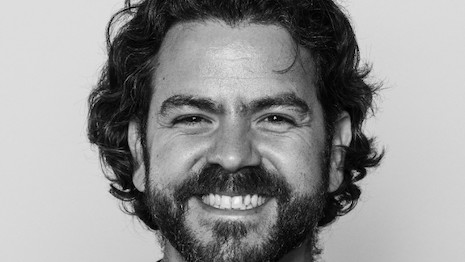By Marcelo Reis Melo
Luxury fashion is a $115.90 billion industry built on creativity, tradition and craftsmanship.
It’s also one of the few sectors where the in-store experience plays an important role in justifying premium prices through personalized and emotionally engaging customer experiences. While ecommerce has reshaped many industries over the past decade, luxury fashion has been slower to embrace this digital transformation—and for good reason: 80 percent of luxury sales happen in stores.
However, even though the majority of sales are in-person, 90 percent of luxury consumers begin their journey online, where they seek inspiration, information, and validation about a luxury brand and its pieces before stepping into a boutique.
The digital opportunity most luxury brands are missing
Luxury fashion brands are at a critical juncture: it's becoming increasingly challenging to build brand equity through traditional channels such as social media and conventional content.
Brands have just three seconds to capture a consumer’s attention on social media—versus an average of one minute on their ecommerce platforms.
But here’s the paradox: while ecommerce platforms offer a longer customer engagement window, most luxury fashion brands squander it by mimicking mass-market strategies. They prioritize functionality over feeling, adopting the design and UX playbooks of fast fashion brands—brands with entirely different customer bases, price points and purchase behaviors.
While this approach can still help digital teams at luxury maisons reach short-term sales KPIs, it can come at the price of something far more important: long-term brand equity.
The luxury consumer isn’t looking for a quick and efficient fast-fashion-like experience. They want something more meaningful: an immersive, emotional experience that captures the allure and exclusivity of a high-end boutique.
Luxury’s real danger isn’t in resisting digital transformation—it’s in using it the wrong way. Many luxury brands are using strategies from the wrong playbook.
When luxury websites look, feel and function like fast fashion brands, they dilute the exclusivity, allure and prestige that set them apart.
Digital directors at these fashion houses need to start asking tough questions: does our ecommerce experience truly embody our brand values? Does it evoke the same emotional engagement as stepping into one of our flagship stores?
So, what’s the way forward?
Luxury consumers today often abandon their digital journey and finish their purchase offline, where they can feel, touch, and experience the brand and its pieces. But what if luxury brands’ digital platforms could offer that same emotional engagement?
This includes assessing how well a luxury fashion brand’s digital experience reflects and enhances its brand’s core values, how effectively it captivates and retains consumer attention, and how seamlessly it bridges the online and offline worlds.
Luxury fashion brands need to take a page from their own playbook and use the same care in designing their digital experiences as they do when curating the physical allure of their boutiques. Investing in tools that can elevate the digital luxury experience, including spatial sound, VR, and 3D modeling to create immersive experiences, would give consumers an experience they can’t get anywhere else.
Because luxury isn’t about what’s convenient—it’s about what makes people feel something, and there are examples that show the impact of this!
Earlier this year, as part of their “Rose des Vents” jewelry campaign, Christian Dior Couture experimented with a virtual try-on format and saw an increase of 17 percent in respondents recognizing the brand as premium.
At Feels Like, we teamed up with Carolina Herrera to create their first-ever AI-driven holiday campaign where customers could purchase personalized gifts for their loved ones with the help of an AI astrologist.
The experience resulted in a 283 percent increase in conversion rate compared to their average campaign. The proof is in the pudding, investing in ecommerce strategies authentic to your brand works!
The Future of Luxury
Luxury brands are at a crossroads. They can continue down the path of convenience and functionality, replicating the ecommerce strategies of mass-market retailers, or they can take a bolder step into the future by reimagining what digital luxury can be.
This is more than just a tactical shift—it’s a strategic rethink. In the digital age, the brands that will thrive are those that use technology not as a shortcut but as a tool for deeper engagement, richer storytelling and emotional connection.
It’s time for the luxury industry to stop being followers of fast fashion strategies in the digital space and start leading the way online, just as well as they do offline.
Because in the world of luxury, it’s not about what’s functional or just meeting the goals of the next quarter—it’s about what’s unforgettable.
{"ct":"opTnhSCxqXpKd5rtwzj6IU2YxE5GA4Dbt5Gsg3b76U6JHSX+6Cmmi7\/TyHgNNOhASGyl7nVVz7c3G9BiX5zyfPYiHYj3sHu4riZDWKvVK2UN5rbqPJfuPWUAYDKRumjSQZ6aNR\/we0Jp+AtAH\/cWHbGO10mMEsFmGGjtphyc4hIhhR8G9eNcT6L5gQywNVzarD7yMI3OAz39u8\/zIG4h0i+sA1UwWxplOvlvCexJTR0H5o9mPJWkDjQnz\/1u22HYKaZ04CMkzHhhw2rcoTZL2ERPsZng5zO5\/wP9Ul+8wWNZflQV8rGHIVtH8r5EB\/FY4PWUY9f2gb9DBRfVxNNi9\/CHciWIGBrvMdkQRJdi5VW9dqRgMwr319CizldlFNCg3dhAVHDOUpLMHYxLH+6ubf78LK8KGrwTct2GigkbwcP9W\/fwOP28G+utNl0UJ0I5i1DG1KZ+YbQ1RNEDpogmQzH48Ng7W3MgKw28eP4PNHqoAMamDdPY7vIYA4kehUeG82EoazBsa6NvL+rs8Dk+4f7l\/ZUv1xHHjvz6wHbTe\/CDcKlpeInV0CIG20QpLXxArbjDBR0SKDFM8UVyOEsV7aXDAAHITvSlUIsqt8t2qCv2SRd99F3RbIgzU80\/R4rkb2Tplj0yDCGyRDAf7ABYDf4nTNedTM\/bCJOLCSb2Mj1GrclLzhHyrpAI0vb1jO5n\/1PqykqwejZLnFhF8vZxVlfDeq+sg7RZh0mFVXvhyLFUEwlA7R7iO6uJhU9dVbPnkTjCK4bxdSRhy1lPuuvmTLYj1vJQ42gg+8y+ZVX8GZ94ykrKA7Et+Aa9xfLOTXn1ZVAZnvJVyfpKCvdI15tUzC4yx2tEIad4W0M9fs8cXuX1TJCTzKS8L956AQ9zwSqpbUw7UY6C9VepNB9nwB2bJviRMM8jhxSrdbgtmNmPYCGeGljJC9mlhyC1zzgjPp\/r1wfYxV4\/aDkDz+AgpiBYJegFRoET3M+flYD\/hgK7SRobXi4KBN4Ik9Cp+favQUbkSqW71zlD1Hv+Gkfsmux\/RtuUKYP9q8u+rJLzdlA0V4LP3NPKIHnlucbucHmCWUh90WUkZBmsQ6b5vbbjmEJ6AXCpUTLBYVQu+aKn7S8s30Twbj\/OdEZaEZOnwPcz3wCiZCEqT5J\/ktFnURcG11+MyBNt41N0Cmh99P+MJjNqpU38d6LzfPKOjACMgDCzB2x9ifIHtyuEYkXWRV9ty\/WFP3VUalKlqhTd1KRB7sKcKdoy\/6ND9orHwaOWLVqFUVFU2ekpcAf7nzdBMwhUHp81nD7JVof2M8vqKt1+Ux8sZSjzkupBv7pW9yD03xmV8WatxkEKoBtSozBLyFRe9SFrxJ+hfj3p+HcuFqCe03LzRjIyd7ghqYpy+vIl8tvKyjKhtYNngC6zEyC9zvqQO3Iow0Gzx5Bbses3HsPAUQI1WxQkJnlsRClQxjCRRbIFizBiDp\/P4Q7QV7rDWi4wPvaaHvXicdz90uiG\/1MxB5GktlfSscDgv6q7pi6jSH864kq00B4B76GzQ+qxmeOv97BFriiVU6TtHChvomC2t418jcWArMrbfjvPxLnTjmblgJ8TnV1E87ujGIhE3lAIxZ69D2HUrY+bNCIHge5gBLuWb4VRd8LQP\/s67Pw91ktMTveYu4u3dvEsXbEm4sooVv2o\/3oziT62VB5YqRvTwAGf1YFu1g37nwNrjuV8RBbve6hYBeb2r6jAJcwpGuVvCWZn2lDtWT0fo78ZHWWW6DUE96PMSy\/bO0nEXj64KTM6aviApR\/VpM8ZaYAUg4+UIihapFg5QTE08UV0srzZcP\/g2HsPw\/jPPfmBDlBcF+8gja0IZSu0dx+ue81LEMqzu0RfU7f68zlJQiN6AfTMhux4F\/3vYb2JvUiyWPQxahbFaiuDNsR8O\/4Z2v7VxYDzuVMo3W1p\/2K8Uy9Fc6nto\/nNkvunLwUinoKrb6NampTWBr0itzywJrKKR\/x5e0ee0NnwyYdAhZc+27M+N5LvgMnUJn8zBJIAYhkxEvnLvyxM96okekEUWk9KGbUbFGFo+jjodEUBhfw7vG+rqpQYGgOzMsQrCbdtSjHZeDH\/KnNCbKjqJDry2mPox3z8ievVB3TxIhcpK9aEY1FBl3dhhi7rwzMlIhszayOiX25iB1egd37Zqul9FDh\/1Z49vcNN7aQcCjS2nT6FUx7YegvPM3zRZ328Ha1rDFpjN7xOYeKpheiU1SLwrTXuS7ieJsgSbxL1XDz4cCk6MP6LLEM4yY\/PFV0yX+Bdhdmtm6dxTcmxpSM\/R5yjn3SHC0XQP3q8lu7kG1a8+d+pCzo90YQzoe3qlllgUA5t7jra+3IOeQa1RDUiO6zTNlq6r331F5nHM3PE7R7sVWc510mFKaSx\/8dfJiuZwvd6jJz\/0MneD+d9kT1Wr5D3MeNyHUjPARFzXbTO8qMXk7u4O5K5ZvgOk0not+grUqUOkAlzXx7sWxZaAVj56xW1D7YAzB5fHe23ZMZ7nlhNkaGCfdYcRkx8hHXygkmNO0xrcgT\/6bl12Diu8qx\/Tz853RhvCKnIA2F9FLCoLIp6aivlQLAyZildga9CcZZKIH93euo5kaxV6MwRNe\/HLvzf9YjNE62Md+Q9wHd\/XFnXmcLITuWutKTuRfQnx1Y3Kvy95ZSxV\/bzPIujzcETNQrn4hxxgF9k2b1eeyUXnIvIMamYDMKbqEe1XKIMZfYmUTKR0CjxCzFjrmPk3NqqikgE9WBdFsH0YXpC7v2UzDnumhHe5hnpWb93dCVzdW9N+5VV\/nyWRohqqFfnddoTCqV+LvSvJWn628FD1JYEPfhCzftJveO+9jjcl7bIHGzPJ\/xeP8gpEdpZYJ6jTm\/KjfjTZE0fCILaTLS2YrID6r2L4jBGhr9a4JExpZaT778s4LCrnQDocjtNyp7rSfm\/\/dRXnJo\/x+jnHuj1cYpSGU49Q64ZkU\/Une1XyxQZ2ghzhV9L2d8CEMHM29UmXX25LCp7NQB\/RexnuiFHvRlaEWQ\/vZJUOoQTvY7Z2nseUCoUX2BmI0cit973QN0BnOZJvHcCZc\/rrpBehzIGGGMlsj4aGu9ruZKsPJvzwfAZr3eCy7qP070j8XhV24mfED2OZqeEjjxSOGcf8laBe1e1ZRfz\/uGP07CQglp2pwia7A5XtDoftsbfPTyqhm5n1mVj2SM8yqH+CducCS6N+sJfP5WKgeavarFSyMs7ozXDdrHE78CWwp8kUerwnkAcbNSzaQwtfhGzBfg6mM2oBgmxkx9IoAKoHi4vPmy2YprusscTEEv4KsGPdNCIrecFSPgkXNxU2ak8ywSS9haDO0EvKPs0o6XwjrZ+Hf+UhYrFtuIWx3jL\/4gjrbQ2V9GOny1PtCpQZjG1yq9F4WKtAmp\/FRfFi0OV2Nvm\/DhdrQD2f312bbJcBJGlKcZbwUblBwDjCOxS3mTCn5woHV8TTBe1j6GBCMf2bPkFgN9SulbvpyANAoaj51s4CtqwLNDi5b5uInnip4f\/PCNAW3vL1lAV1HiMp70w+DnParlaA7or\/Zxdu9ZQbRO\/dId09EtLOeGOSVpemQG2KtheHFrVpaXAc1xeET0ZLtyBwzXNWbrWe5LwjDFTwJ8frO6oNTYlEvw23MF+u1W9IUed34dEO449RQ19Wapyrx4PnrBLAWayXAPbhtFboudG3ruTTM9BijhQsOyp0WUIgZU21w5RQOfaqc7QDz+kP0KQhphJyyk\/uKG1GunwyRiUljr7fzCwTrMAWTeS3UtjROoEpzoRx3529+1q\/RPusvLA4dsXhkErPYwTQHmsXo5u2P6bnKeXRRjx3BVjfCDiMkwBAIRlzmIPin5iarae4OZCRKhgnNyP+QwhfyhHA7WdtyICvuVxZ4qS\/MF5FBMflhUxZiZoprgvLwmSJMEF87MK+skggou2qfs+2EfmfWrjUDl0+JZzCLHs\/5xPcmR3ComcgGLI1QACdFu6ttGSj+jtJQT1beJIuF4oibwLEs4CCnkSpoCAdzMkgl1EpdL3qIxpW97VZB1wD5ziEq4paajMSDnZR7yFElehgJl0UZi5fLV1lgLbZi4An\/km87T+lWfFQjJYEybjS9UGUk5V022rhOmNJFb\/T6A90ghLDnZFLsJc0mq6Wx2tEhht87WmXyLZMR5P0OTwyZOWepFdVZ72hFhKuVUqWHSxDJaQnoBMu2VXM063oTK1XtCX8XHQww3DboYpNi0RUB\/n7V\/wO1SHM5xZSygdoqWod\/9BVZSz5fMB2mWk5tdy0jByRsoc69aLThKsKN3aMcpwpaFp7OrjNbINjr8j+g06ssGTFOdmOlPTLazOt3juBcJbkOMcacx9kWPj9dqeaiyfIS4BisrYuarff5aaDPrJxuK4VBhyS0wkkJ50R5sAubVBw1aB7piA6rUGgacNyg6VBg8VR3hBHMwY0qb8d0+61gSZK6xlsUt2\/KRKll1Cx+5nYL09dG8iYXXsZVxbIVMi9\/I1eQa\/vi9Ry6y0kKzr2D3kkh4oELbrdYRjqyAVSqB2fFZrxtUl3ENPRihwCsqA6GefgrFfOwwe4RM3dmygSmAvISam6w6yQoe25JlhINigzGMQUbu6fjHQYt6F5m8h6I8MZHYws9VstB2WW9ibxir3IdxKGFxoTsijqJE2i0YVZjIRaCjLdESUkveJzpGTpP3c+K\/kHiQgfFXAnZI8H4Y5f9r2iAK7bgzXfUwtgqrEWH8KLvewKxbfnq4479WdTu5yF52ms2bxH2t5fe46+kndc04zVSLgSIZWoI+u4oBACJ8bgh50atLhaeRH0S3n9cQAE5Z3wRqGnROzRSajTnfY\/37EI6vIJkMKfDHqfDBKd6Eebz73K1Y8bVymNvDpa5\/55hH+4VxmVtWOSA4j0tB4bOGPq2m5Ze70p82rR0Oh6g8bQbJ0ksmlKtIxuDw7p5eyy4jVc0NPrNwdPokUJdYEAV4ZHC9Ko86p00y9qD\/TxAWJWgOtLQH9xnvdUDlZpJBctDptpRKZWDzEDy8zkeLAgKbIk6eQiz\/eO2\/kcbBcdu09rdIsIEGUNI3ce2mNSKX1LnBcnIRk4Y0YHFLQU76KDtPuB0E9AwVcGoG1Kep8LDo67hXLFpyV5Ig+bzLSQ2fqgN1NREJPFM8XWujTyzqSFUOZkMxKaMT8Tl1FqRXuczjrm\/2zsvvZWOzom8fvWmeiCCPp6Gm38XL8f6mf0ftWF4NTa4AT8eCz+NRjj80I\/v0RXBgy+OFppEH\/iuvX7xlBXqp4oE5Bf1gbWYisiXpkPED9HPZjTvtou97LvOOTOgsLkZWwXICzjUWPnQjjXU94PZBQQQDta\/J5HLKwLI3yveu5mJRji8KSFJbm7nfAAmH\/QnGZ6bt7NCB760niEF\/B+zeafy8LldYZ7tQVQyzPUbdcPKrgALSFBRmrmCOf9aET0OXvSZSZgqF1YnHCayIw2K445FeXYyDP8Uh5t\/TJ4VbjElzvmaEmyZl\/IIYNAzabxNFI47zngJBhWgslrTSvoBgMRIwZv2MVwSXEUSSTSb0MqcB4DABnNpoFAmhtVBUh0OtTyOBXWA2mXGMKW9bDgMFOEwnCnBWkZBeZn\/jhZUeEd2+CmcBwR5EKYfyDD58uhnBGrHox73AFu8hOM1gDjLSdwqoE3I0tpqfmQP1GtZVzKn2qSCr6jhULstDKS4tjVRzU3WskLl9ovc\/C55o4xvtxnbKRtxzlDoC2vb1xOy1yMC+iSlnSpDdlZdXqLcC1nT1Nmg4I8w9netBOucW6bnKefvJfVzIiia48Sz5syANBhFK4Tv1W1Wa9FDsCTQj+AoWIeA0iFfXE2u+QNJQ573mgUfZelMMR+1JuGD7SA+TlIw9bKwI0fHuiIldPlUFJr22\/mshy9gOYGHABP\/K1dvHGVJtzy2rs8oih8gDRoDSKvMemUSN6H+vyQMS1C0SKAMnhjwLpMlwAc\/zakEfjoso8+twCE1fT9wSAZSpU3kofLWOosjOevDuMUHjSF6n8cj9U1UFG0io+5+R48Qk2aTtmioX86jusJDD0BIxhaWXM7aK5TjvQKS6HbpoMWagTBGqmuiRkxnUFhMn3gdEocR6L6wjtdUUuM3m50m533sSD5PNSGM+6ujlRX0UvjPKbvhZ\/mcFigMrL3f8IvRsNx6sExvBF+WS7+jXEMbCZT6Dg2SzhyV9n1bsdP0FcFb5bbDSDhK0arpvhMQYxkKWlJEWysWFbdn95Q1gAteQKDAj4q92+xvd9Bc2KeFeK4ezxx9K872jF5E+D\/cgohj89EoKRz5ZELOpTDBYJe2IfRvneTZd\/xkdnvHHT9W2kdU993JCK7B4UmRyzA+OD\/o21ucfkwtxICDEPzXnpVPP4PUcoRrc8iojUc4O+w\/yxMOwKrprz28I7i7W8\/myusl4pdmDCui9m91X9u06raFwQaChJewTgqLucO3Bfvf36fZq7wEUHi7cAr5Aw2FbH9cBUPwCkCzzcX+6\/7IuE5sXz8ps3zy9ybjDKBV\/FoZV9rW0cYNYJWveM+sn7GL\/su9oSp4XFJm63yUhnMWBoGpzKjFyhVFuhkPh2r7DZLCuuzwh9Bu6OrrBLazJh0dgH7kRuJHkkaQN1tI1R9Cn3RM5EPfguujDmT9RgurU+GTisv7vtUMbZwPWeD05fiweRKePQrW6cht3j0MTkDq0F4HfVgA6oOZW3rXmU2RN8QUSArhcCyaO9ME0WVW29Lq1V3uPP\/6bPeJdb5vc\/+wz2jw0vaSyKLnFupBTd45JlPpVCmUgD5DAorBmp2zl9iNULq0biS2sw15S3\/3RhMrtMUhbFi49W4KhalsUcpKjeGMc+UCfPexx0uDZHNPSk0kbgGW7BfAueJCZlr5PdJkHJsfuUCDGl0hkgu1CPfLXCLq+m9l\/57FkGna2Oij7v4I0Ru67YwJ02uBBFI+MaKsZMsa\/K4fddabGVfRkDFQvaMtC7LD8PukGA5wD8qjVdfT39U9qVQ1yxAGyDTcq50gKWLy76iKzQUjyx8Cmfq+AvLkrYQiVtIvCB2Hv+48PYbkcn9VyhzZePd9NhVxf8KLLvHofKsES4vpdGPpu3Qlks+N4iahVjiV8D7\/fBhYaiKKASy10WiE+5JFEamb9nIInou94SjvEodG2Jfctl\/XV9aQJGx891LF\/5VMUjI4rMMnLOsfjLXhS2BRN3Fc8JX\/sKIIyUgvUCwOyZ51SeRMvkhg1nhKDbaCSCZOMxnrhfFOnXAT\/VsozasMyHZJkE3d+K0H2I50I6gdSBqcVHIEe6zplU448xD\/6bxNYZ7M9v2TI4VtLT4GdPzpTmSu0AVHpanREXSpT4g0mZ9f3gzJz4t+3Y19Fhvt8WsjidNStRe7zQAv72KNi0jinx\/1UsW7SxLhg8D3Mz7dki6lkqYwJJL8UFrFCOjDLJjQiRYYBDy+4b3oDbGmBxhUt+90HN8xA=","iv":"1750e7499935e383e9b6f846c7b39d46","s":"f447702139611448"}

 Marcelo Reis Melo is global executive creative director at Barcelona-based design firm Feels Like
Marcelo Reis Melo is global executive creative director at Barcelona-based design firm Feels Like